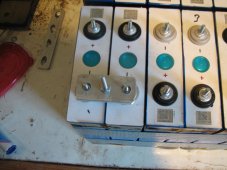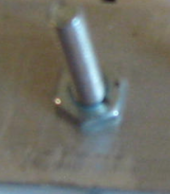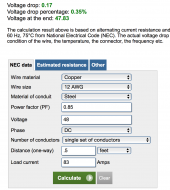One for the amperage capacity gurus.
I have 32, 100ah cells and will connect two in parallel via an aluminum bus bar to give the equivalent of a single 200ah cell. The welded studs on the cells are only 4mm, so the plan is to drill the center of the bus bar and have a bolt as the actual electrical connector. These bolts would then connect the other cells in series via connecting wires and crimp/soldered terminals to give me 48 volts.
This is my proof of concept. I've drilled the outer holes to 8mm which means the bus bar rests on the largest contact area of the cell terminal.

The book of words for the MPP all in one unit specifies a maximum current draw of 83A @ 48V, so my question is, what would be the best bolt and AWG size for the interconnecting wires for that amperage?
I have 32, 100ah cells and will connect two in parallel via an aluminum bus bar to give the equivalent of a single 200ah cell. The welded studs on the cells are only 4mm, so the plan is to drill the center of the bus bar and have a bolt as the actual electrical connector. These bolts would then connect the other cells in series via connecting wires and crimp/soldered terminals to give me 48 volts.
This is my proof of concept. I've drilled the outer holes to 8mm which means the bus bar rests on the largest contact area of the cell terminal.

The book of words for the MPP all in one unit specifies a maximum current draw of 83A @ 48V, so my question is, what would be the best bolt and AWG size for the interconnecting wires for that amperage?





